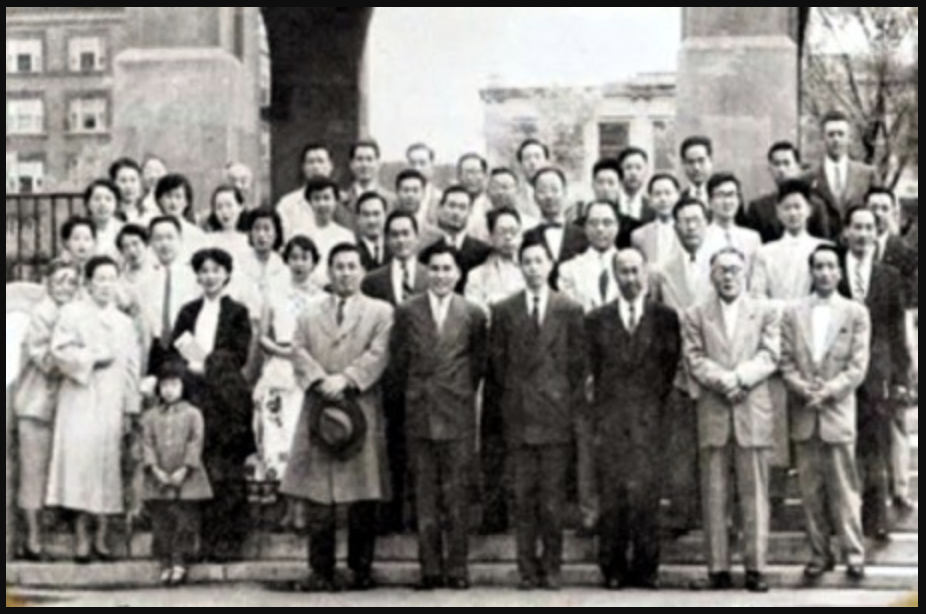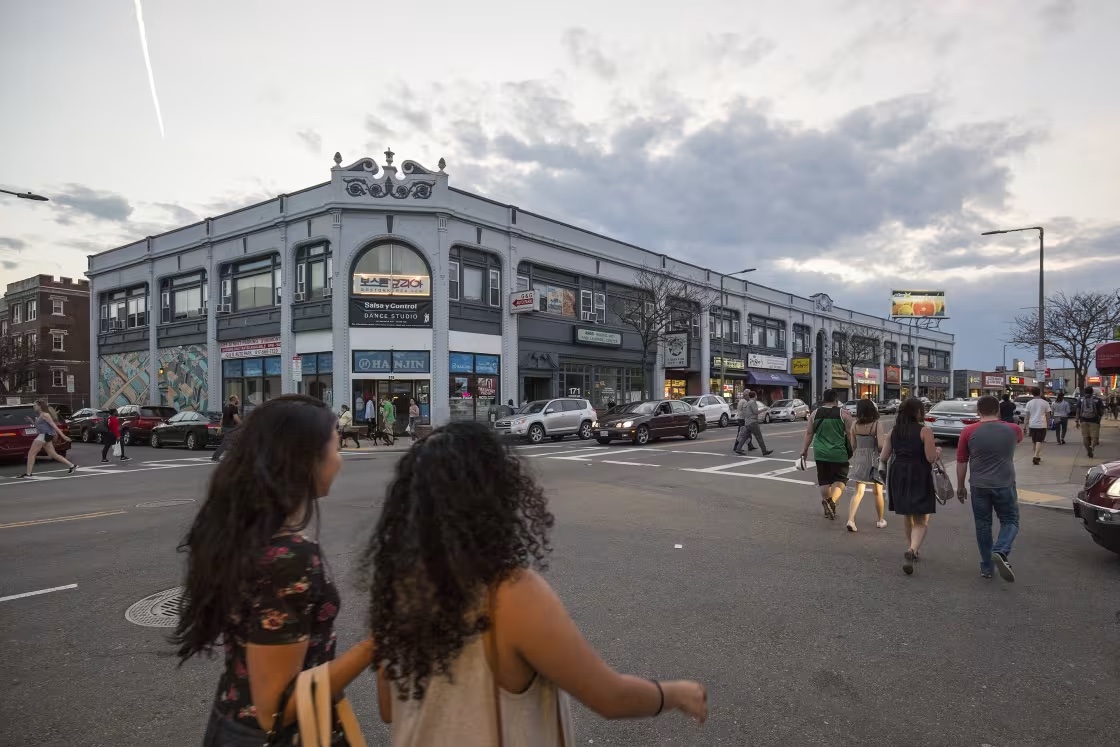Corner of Harvard Avenue in Allston, an area often referred to as Boston’s “Koreatown” and home of dozens of Korean-owned restaurants, businesses, and the Korean language newspaper, BostonKorea (building center left). Courtesy of Alastair Pike, NBC News.
Korean migration to Boston has mainly occurred since the 1950s, but a small number of Korean students first ventured here in the late 19th and early 20th centuries. The first notable instance of a Korean presence in Boston was in 1884 when the politician Yu Kil-Chun (Gil-Jun) came to study at Harvard University. Syngman Rhee, who would later become the first President of South Korea, followed in 1907, as did others in the decades before World War II. These early pioneers cultivated commitments to higher education, Christianity, and Korean nationalism that would shape the larger Korean community that developed after World War II.
Many of these early Korean sojourners to Boston learned about the city from American Protestant missionaries who spoke of opportunities that existed in the United States. The missionaries portrayed the US as a Christian country where Koreans would be accepted, a premise that did not work out in practice as Korean immigrants often faced a hostile reception. Many of the Korean Protestants arriving in this period first congregated in loosely affiliated faith groups in Boston and Cambridge. Across the country, however, Korean migrant communities began to shrink following passage of the 1924 Johnson-Reed Act, which banned entry of all Asian immigrants except students and those in certain specialized professions. Emigration from Korea also proved difficult as Japan tightened its colonial rule of the Korean peninsula, an oppressive situation that persisted until the fall of Imperial Japan in 1945.
Christian students were among those opposing Japanese colonial rule, and some came to study at American universities in the years following World War I. A number of them came to Boston to attend Harvard and Boston University, and in 1920 they founded the Boston League of Friends of Korea to support Korean independence. This student diaspora laid the groundwork for a much larger wave of migration in the post-World War II era.

Post-1950 Migration
The outbreak of the Korean war in 1950 led to growing US-Korea involvement that helped fuel migration. Relationships that developed between US servicemen and Korean women during the war led to the migration of Korean war brides in the years that followed, including some who moved to Massachusetts. The poor treatment of mixed-race children of American servicemen and Korean women also gave rise to an adoption program in the 1950s that would become the leading edge of a much larger international adoption movement. Since 1953, tens of thousands of Korean children were adopted by mostly white families in the US, including several thousand in greater Boston. Uprooted from their families and culture, some of the adoptees later reconnected with Korean culture through local nonprofits serving adult adoptees.
Changing immigration laws also influenced Korean migration in this period. Under the McCarran-Walter Act of 1952, which repealed most measures banning Asian immigration, South Korea was granted a small quota of 100 immigrants per year. Under the 1965 Immigration and Nationality Act, the quota system was eliminated, allowing a significant growth in Korean migration, particularly among skilled professionals. Korean university students in Boston were now able to settle permanently in the area if sponsored by an employer, and family reunification provisions of the 1965 law allowed them to bring their spouses and children.
Settlement
The first tangible sign of a postwar Korean community was the Korean Church of Boston. Led by Reverend Pak Daeson, this church was organized by a handful of Korean graduate students living in the Boston area. The group first met over Thanksgiving weekend in 1953 and worshipped at Boston University’s Marsh Chapel. The church changed locations several times, eventually finding a permanent home in the First Presbyterian Church in Brookline in 1967. Other Korean churches, like St. John’s United Methodist Church in Lexington, took hold in other communities in the decades that followed.
Korean settlement initially clustered around the universities and churches that migrants first attended. The Boston neighborhood of Allston-Brighton—where Boston University is located— was a main hub of Korean settlement and remains so today. It was home to roughly a third of Boston’s 2,406 residents in 2022. Cambridge and Brookline also host large Korean communities, as do the suburbs of Newton, Lexington, and Somerville.
Work
Korean Americans in greater Boston work in a range of occupations, with the majority employed in high-skilled managerial or professional fields. This is not surprising given the high percentage of Koreans earning bachelor’s and graduate degrees. Both nationally and in Boston, Koreans also have a high rate of self-employment, which is evident locally in the ownership of restaurants and dry cleaning businesses. A notable example is Allston’s Harvard Avenue, which as of 2024 has 15 Korean restaurants within a .3-mile span. The neighborhood is also home to other Korean-owned businesses including BostonKorea, the region’s largest Korean language newspaper. Sometimes referred to as Boston’s Koreatown, the area has become a regional center for this growing ethnic community.
–Brendan Mahoney, Boston College, 2025

